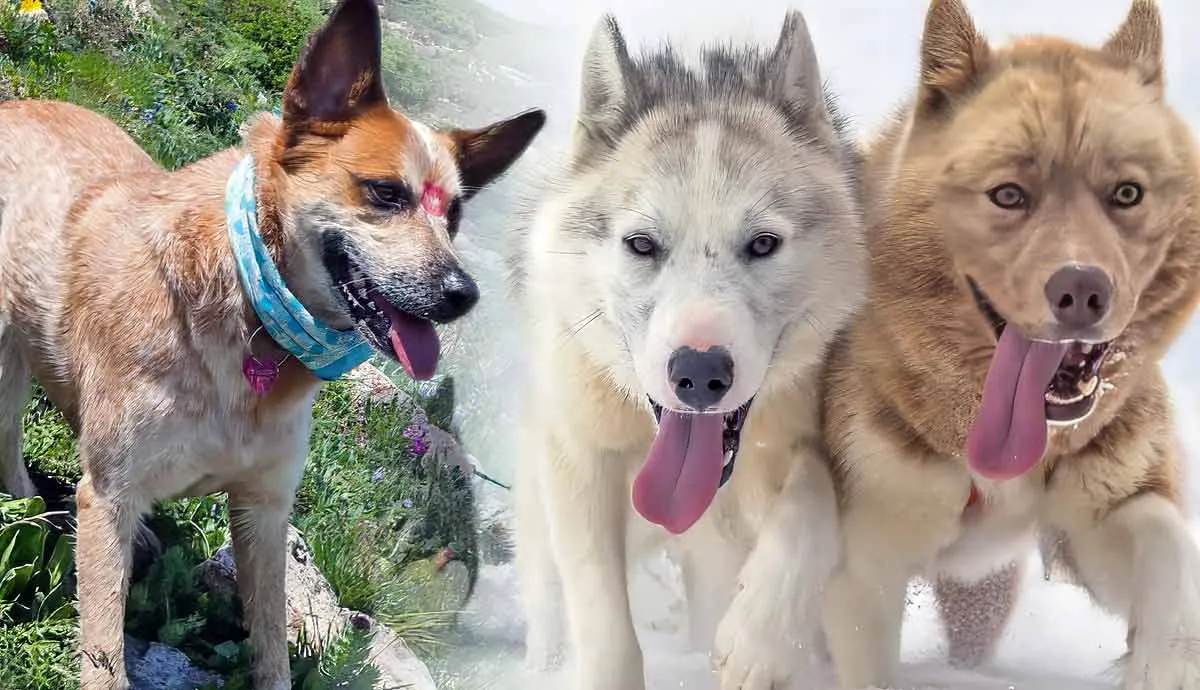For thousands of years, mankind has immortalized their furry friends in paintings and other forms of artwork. These pieces are more than wall hangers to admire; they underscore our deep connection to dogs and illustrate their roles in our lives. From paintings created thousands of years ago to illustrations that are a bit more modern, we highlight some paintings with dogs.
1. Cave Paintings in Saudi Arabia

Thousands of years ago, dogs weren’t exclusively household companions. They had important jobs, helping hunters track down and capture prey. An 8,000-year-old cave painting located in Saudi Arabia shows just that. Here, a hunter is surrounded by 13 dogs—with some connected by what appear to be leashes.
Long-legged with fish-hook tails, some researchers believe that the artist depicted Canaan dogs, a roaming breed that’s still found today throughout parts of the Middle East. However, other researchers believe that these dogs could be sighthounds, such as Salukis. These dogs have ancient roots in Jordan, Lebanon, and Gaza.
2. Cave Canem, a “Beware of Dog” Roman Mosaic

The Cave Canem mosaic is living proof that, throughout history, people have relied on dogs to protect their properties. This mosaic was discovered in 1824 by a famous archeologist who was excavating Pompeii. It literally translates to “beware of dog” in Latin, and it’s located in the entryway of the House of the Tragic Poet. This mosaic was just one of many found in the historical structure.
The dog in the mosaic is a Molossian hound, a now-extinct dog breed that originated in ancient Greece. These canines were valued for their intimidating appearance and loyalty to their owners. They’re considered to be the ancestors of the modern-day Cane Corso and Neapolitan Mastiff.
3. “The Dog” by Francisco Goya
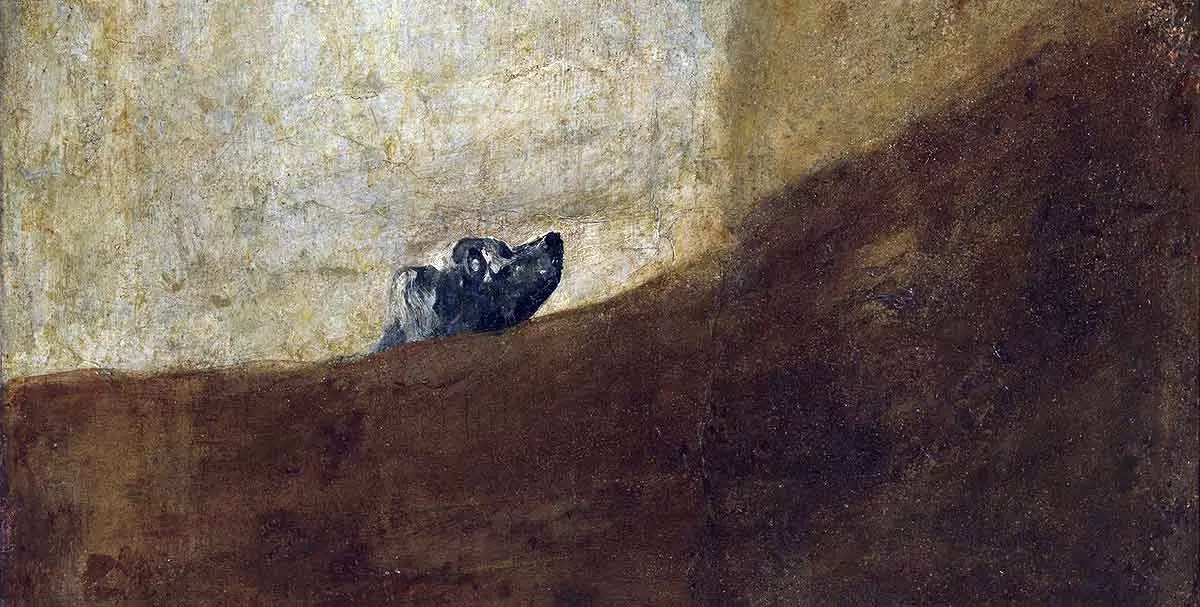
Francisco Goya was a Spanish painter whose paintings reflected political turmoil and serious subject matter. Yet, his paintings grew progressively darker after a severe illness left him deaf in 1793. Feeling cut off from the world, Goya retreated to a country house on the outskirts of Madrid, where he lived in near isolation.
There, he created a series of artworks known as “the Black Paintings.” Here, Goya painted on the very walls of his house, with some bordering on grotesque. One of those paintings has been named “The Dog.”
It’s a simple yet powerful illustration of a dog’s head surrounded by a vast space. Some think that it represents the inevitability of death, while others think it symbolizes Goya’s isolation in the world. Some art historians think that the Dog was painted over another piece of artwork––a hidden painting lost to time.
4. “Dogs Playing Poker” by Cassius Marcellus Coolidge
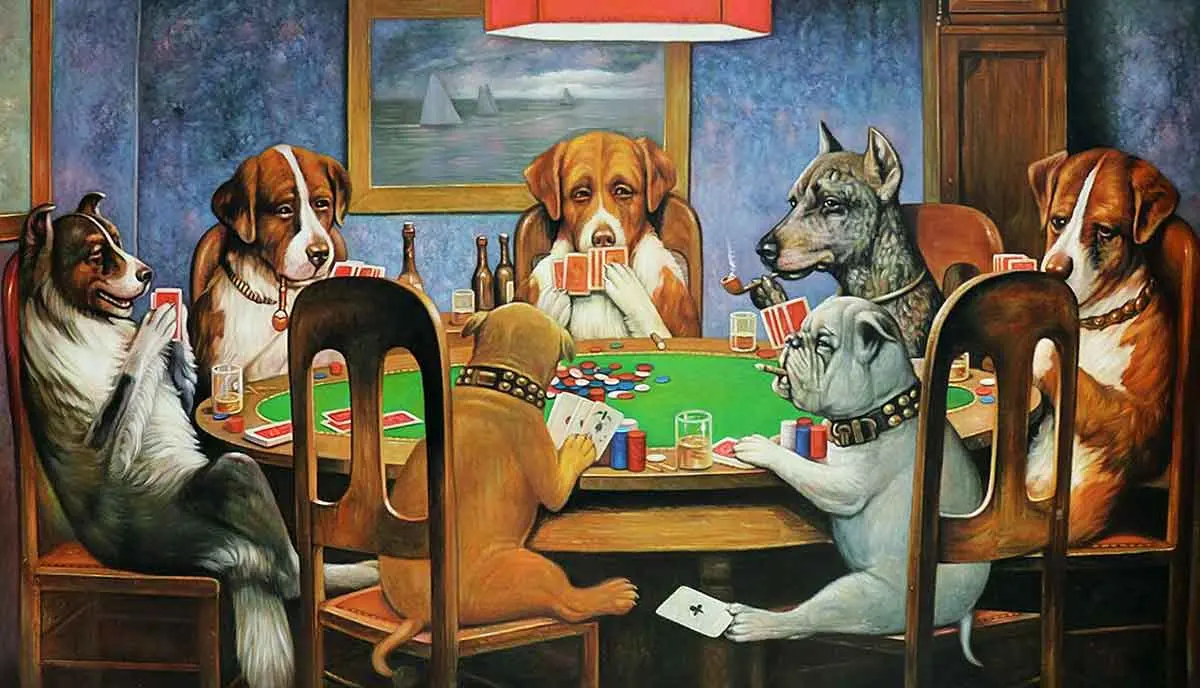
Not all paintings of dogs are doom and gloom. Some portray dogs acting as their human counterparts.
“Dogs Playing Poker” isn’t just one painting, but actually a collection of 18 separate artworks. Starting in the 1890s, Cassius Marcellus Coolidge was commissioned to paint a series of pieces, most of which would advertise cigars or other forms of tobacco use. Of the collection, 11 featured dogs sitting around a card table. The others featured anthropomorphized dogs reading the mail, testifying in court, having car trouble, and dealing with other headaches of daily life.
Many people debate whether these comical paintings are truly “good art.” However, there’s no denying that they’re culturally significant. Historians consider them integral to modern kitsch, which is artwork that is considered overly eccentric, banal, or campy.
5. “A King Charles Spaniel” by Edouard Manet
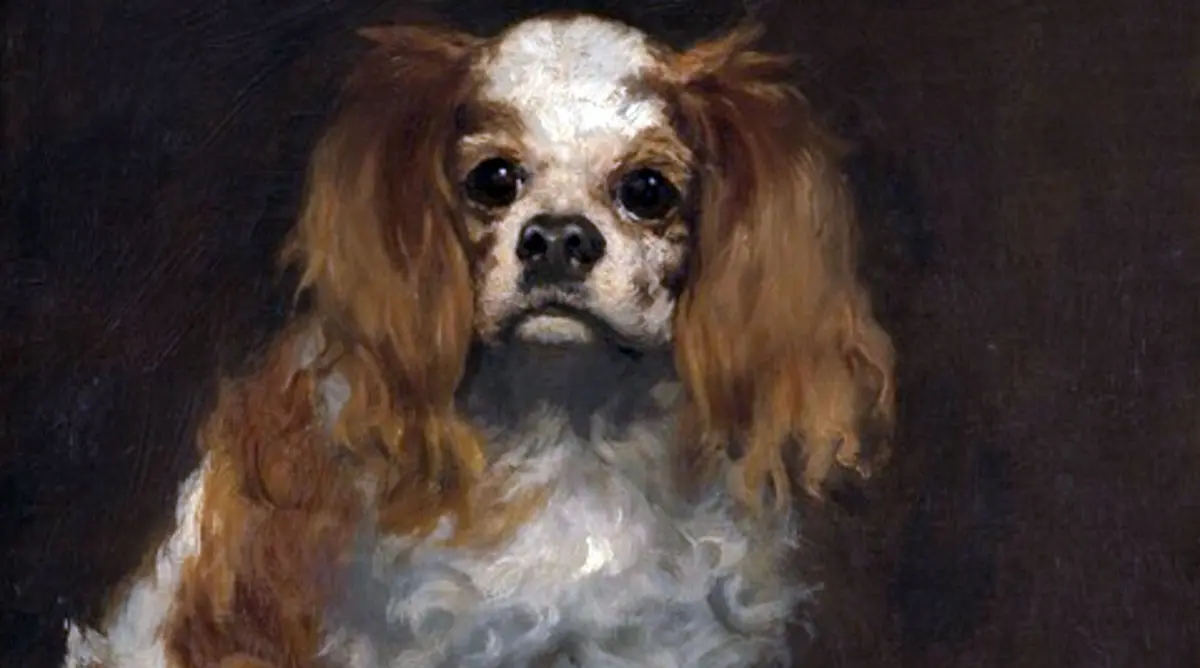
Edouard Manet was a French painter whose artwork would later inspire the impressionist movement. He often used models in these paintings, relying on color gradients and blended pigments. While many of his paintings were backhanded parodies of more famous pieces (such as “the Birth of Venus”), he also painted street scenes, bar life, and, in this case, a Cavalier King Charles Spaniel.
Since their conception in the 1600s, Cavalier King Charles Spaniels were associated with nobility. They were actually bred by King Charles II of Great Britain, who adored these pint-sized pups. Affectionate and graceful, these small dogs are known for being great family dogs.
They also come in a unique color called “Blenheim.” That refers to a rich chestnut patterning on a striking white base coat––just like the dog painted above!
6. “Lump” by Picasso
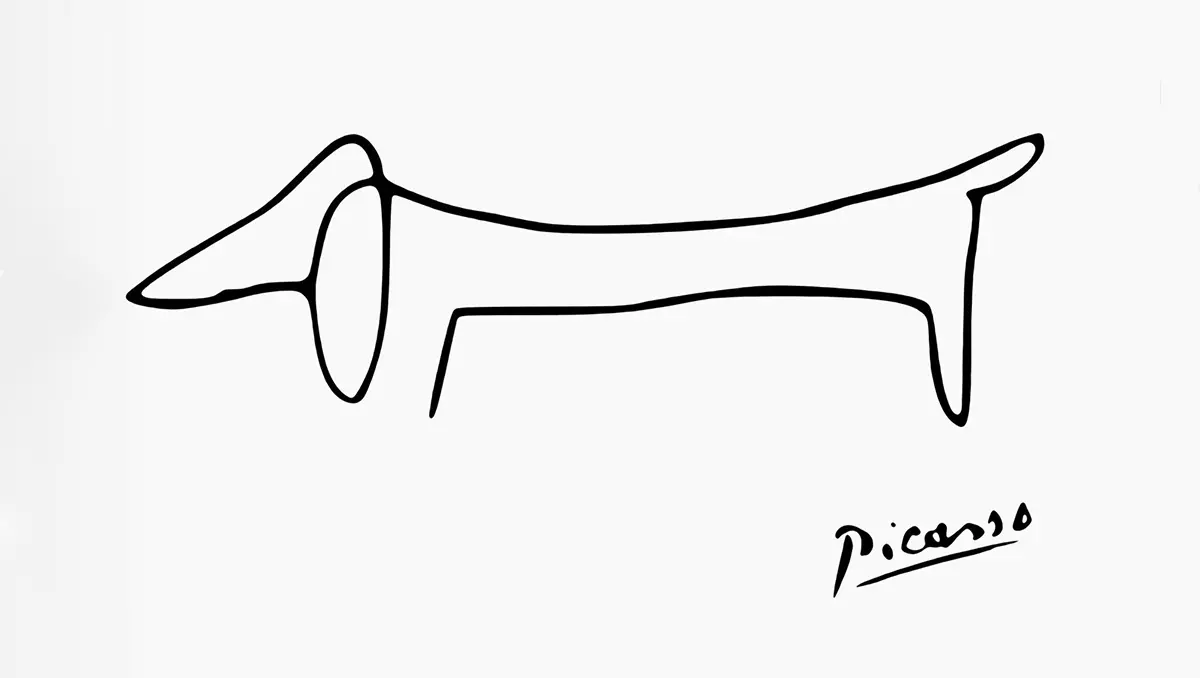
Pablo Picasso is one of the most iconic painters in the art world. While he’s best known for using geometric shapes in his artwork (and painting lopsided facial portraits), his decades-long career included many unique styles. One of those styles was simple linework, as illustrated above.
But just who is the dog pictured? In 1957, Picasso took up a new residence in France, where he met Lump, a spirited Dachshund who belonged to his friend. Picasso fell in love with the short-statured dog immediately, feeling compelled to immortalize him in the drawing above. During his six-year stay in the region, Picasso and Lump were best friends. The artist once said, “Lump, he’s not a dog, he’s not a little man, he’s somebody else.”
Lump lived a long, pampered life—living more than 15 years!
7. “Portrait of Maurice” by Andy Warhol
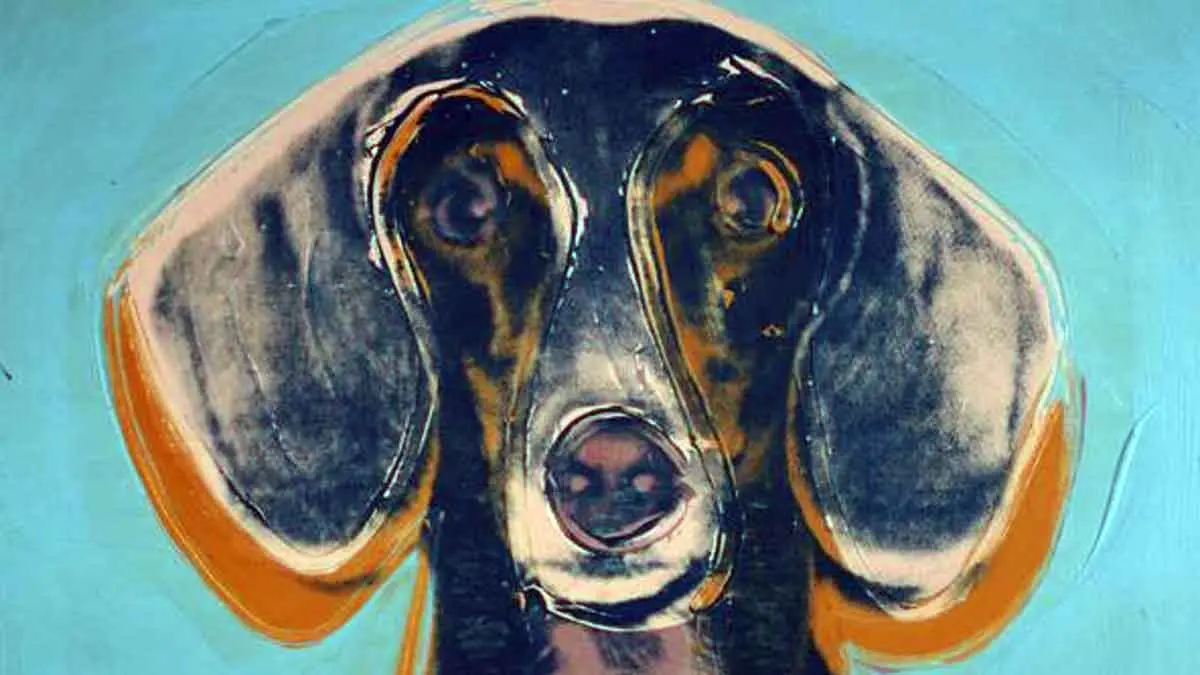
Andy Warhol was obsessed with the rich and famous, spearheading the pop art movement of the 1950s and 1960s. However, he had no problem taking a commission here and there to make extra cash on the side. One of those commissions was of Maurice–-another Dachshund on this list.
Warhol didn’t create this image using brushstrokes and paintbrushes; he created a screen print using Polaroids furnished by Maurice’s owner. Maurice’s likeness has been in a museum since 1995.


